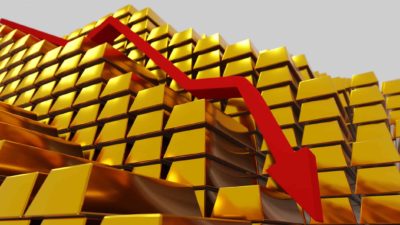Gold bugs, investors in ASX gold mining shares or gold exchange-traded funds (ETFs), and anyone with an interest in precious metals in general, will no doubt be familiar with the sharp rise in the price of the yellow metal that we've seen over 2024 so far.
As my Fool colleague discussed this week, gold rose from US$1,823 an ounce in early October to a new all-time high of US$2,365 an ounce just this Thursday. Humans have been putting a price on gold for almost all of recorded history, so a new record high is no small deal.
Interest in ASX gold shares has predicably followed this surge in value, as has interest in gold ETFs.
There are a few ETFs on the ASX that allow investors to gain direct exposure to the gold price without having to physically own the metal. Most do so by backing the ETF with physical gold bullion stored in a bank vault. When more funds enter the ETF, they are used to bulk up that ETF's bullion reserve.
Given the surging price of gold itself, it's no surprise to see ASX gold ETFs following suit. To illustrate, the VanEck Gold Bullion ETF (ASX: NUGG) has gained an impressive 18.7% over 2024 to date. That beats out most other investments, including the S&P/ASX 200 Index (ASX: XJO) and the S&P 500 Index.
Other ASX gold ETFs, such as the Perth Mint Gold ETF (ASX: PMGOLD), the Global X Physical Gold ETF (ASX: GOLD), and the BetaShares Gold Bullion ETF (ASX: QAU), have performed similarly. Every ETF on this list, with the exception of QAU, has recently clocked a new record high.
Is it too late to buy ASX gold ETFs at all-time highs?
But with gains like that already under the belt, is it too late to invest in ASX gold ETFs today?
I tend to think that it is. Gold, like most commodities, typically rises and falls on a cyclical basis rather than climbing slowly and steadily.
Gold's trajectory over the 21st century thus far has been upward. However, this hasn't come without peaks and troughs in between. A subsequent slump has followed every past all-time high for gold.
Long-term gold investors probably remember the then-all-time record of just under US$1,900 that gold hit in 2011. It took almost another decade before that high was again surpassed in 2020. In the meantime, the price of gold almost halved from that high at one point when it hit US$1,060 an ounce in 2015.
As such, I think the best time to buy gold, and by extension gold ETFs, is when it is in one of these slumps. Not when it is minting fresh new all-time highs. Of course, this time could be different, and gold might hit US$3,000 an ounce by the end of the year, for all I know.
But I like to take investing cues from history, and in this case, I think the lesson is clear.








